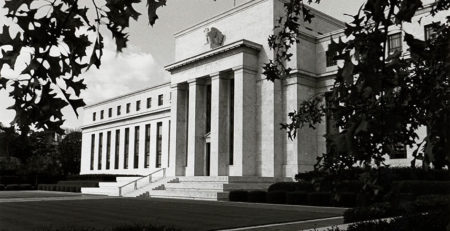Spanish Bank Fails – Harbinger of Things to Come?
Last week Spanish bank Banco Popular was in danger of failing and was purchased by Banco Santander. While the acquisition was praised by Spanish and European officials as a fine example of how to resolve a failing financial institution without requiring taxpayer funds, it still raises important questions about the health of European banks.
Shareholders, Bondholders Wiped Out
Banco Popular found itself the victim of a bank run, with depositors withdrawing up to €2 billion ($2.2 billion) per day from their bank accounts in the days leading up to the bank’s takeover. Unlike the Cypriot banking crisis of a few years back, Banco Popular’s failure did not require depositors to take a haircut, but the bank’s bondholders and shareholders were completely wiped out.
How Strong Is the European Banking System?
Spanish and European officials praised the takeover of Banco Popular and Banco Santander as a textbook example of how to resolve a failing bank. And indeed, the takeover seems to have gone relatively smoothly. In fact, if you weren’t a keen reader of banking news and financial market events, you may not have even heard about the takeover. It almost seemed to be just a small blip on the radar screen.
While all eyes have been on Britain and the fate of London’s banks in the aftermath of Brexit, or on Italy’s weak banking system and the drama surrounding Monte dei Paschi di Siena, Spain has largely escaped notice. But the failure of Banco Popular raises new questions about the strength of European banks. Nearly a decade after the financial crisis and five years after the European Union bailed out the Spanish banking sector, why are such large banks continuing to fail?
Banco Popular was the sixth-largest bank in the European Union’s fifth-largest economy (fourth-largest economy in the eurozone). The bank passed the European Central Bank’s rounds of stress tests, so it supposedly held enough capital and was deemed to be in sound financial shape. And just this April, Spain’s economy minister declared that Banco Popular had no liquidity problems.
Mortgage Exposure and Fractional Reserve Lending
In reality, the bank still maintained significant exposure to mortgage loans, with around €37 billion ($41 billion) of foreclosures and other non-performing loans held on its balance sheet. And that’s just the nominal value, no one seems to know how much those loans are actually worth. Banco Santander is now faced with having to figure that out. Investors thought that Banco Popular was underperforming and depositors grew wary and began to withdraw their funds from the bank.
A quick perusal of Banco Popular’s balance sheet shows that it had €82 billion ($92 billion) of customer deposits, against €3.2 billion ($3.6 billion) of cash. That’s not enough cash to cover even two days of withdrawals at the rate Banco Popular’s depositors were taking out their money. Even the €15.4 billion ($17.2 billion) in available-for-sale financial assets or the €2.1 billion ($2.4 billion) of financial assets held for trading wouldn’t have enabled the bank to hold out against a bank run for very long. €2 billion of withdrawals a day quickly overwhelmed the bank’s ability to pay out deposits, and so the bank found itself forced to sell itself.
That underscores the danger of fractional reserve banking. Banks only hold a fraction of their deposits available to depositors to be available for withdrawal. The rest is loaned out or invested in some way and isn’t immediately available. If a large enough portion of depositors want their money, the bank won’t be able to fulfill those demands and the bank will go under.
Therefore, “money in the bank” isn’t exactly an expression of safety. If you want real safety, it’s far better to invest in gold and silver, tangible assets that hold their value and serve as a safe haven in times of crisis. Indeed, European investors are taking that advice to heart. Demand for gold coins and bars was up 9% in Europe in the first quarter of 2017, largely because of a political and economic uncertainty.
That inherent instability of fractional reserve banks affects American banks too, and it’s only a matter of time before we face a large bank failing. Do you trust the bank to give you your money or the government to insure your deposits in case the bank fails, or would you rather have the safety and security that gold and silver offer? Choose wisely, before it’s too late.






